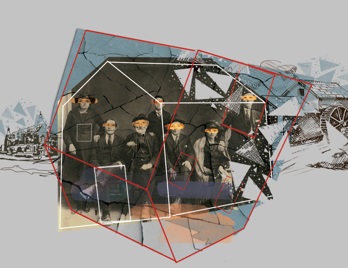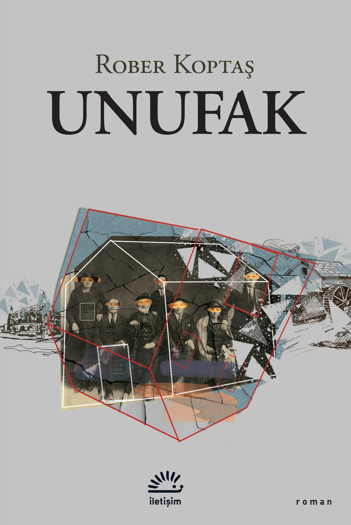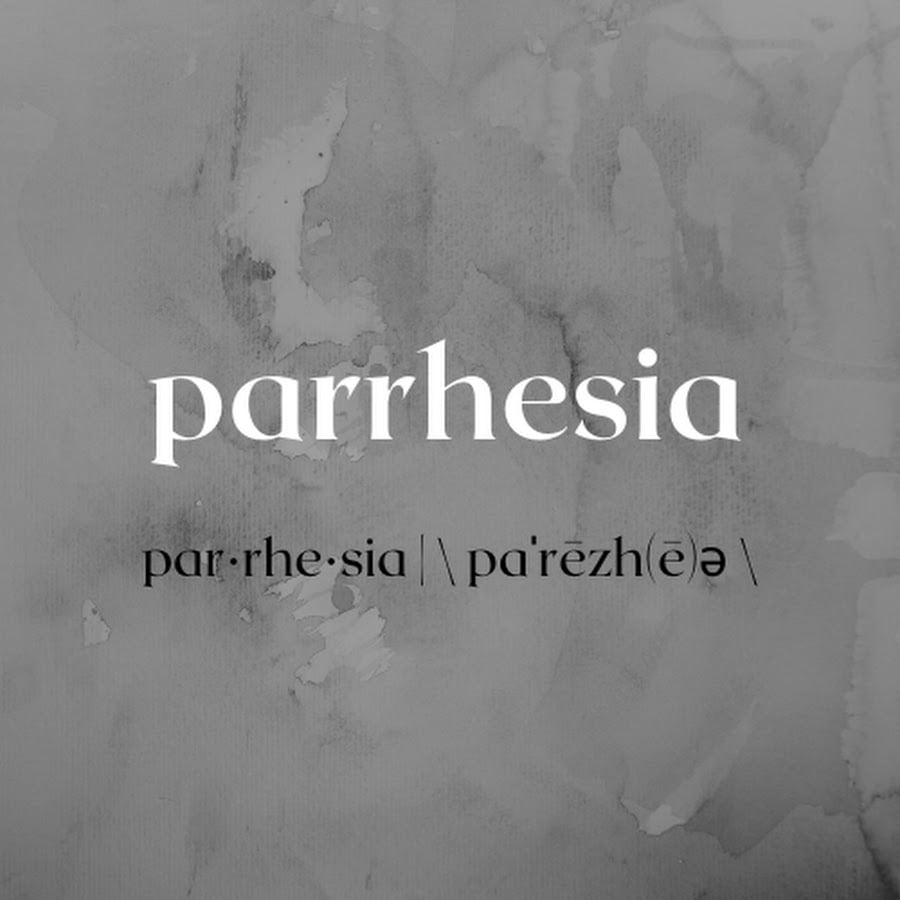‘Unufak’: Displaced Lives, Fragmented Narratives
In his debut novel Unufak, Rober Koptaş attempts to touch upon the suffering and devastating societal events experienced by the Armenian community of the 20th century through a story crafted across three generations.


MERİ TEK DEMİR
Literature is sometimes the most sincere and powerful tool for revisiting the past with a fresh perspective—not to pinpoint concrete truths, but to reinterpret the gaps left between the lines of history in the light of personal and collective memory. In his debut novel Unufak, Rober Koptaş attempts to touch upon the suffering and devastating societal events experienced by the Armenian community of the 20th century through a story crafted across three generations.
The plot, moving between the past and present of its characters with sharp transitions and multiple narrators that could make it challenging to follow, begins with the childhood narrative of Artun Devran, the youngest generation of the Devran family, whose surname was once Devranyan. Told in a tone that oscillates between sorrow and anger yet retains its innocence, Artun introduces the reader to his parents and shares the impoverished family life of his childhood, his sick father, and his refuge in books at school. At this point, the reader is unaware that individuals from different generations of the Devran family will enter the story as narrators. Nor do they know that the story will shift from Artun’s perspective to his father Kevork Devran’s search for answers. Artun’s story, which begins and ends in Istanbul, expands to Kevork, stretching from a village referred to only as “T” (with minimal metaphorical hints about its location) to Istanbul.
The village of “T,” where Artun’s father Kevork grew up, is both Kevork’s paradise and his hell. The narrative stretches so far back that we see this conflict originates with Kevork’s grandfather Morso Devran and his grandmother Takuhi, nicknamed “Fındık” (Hazelnut) for her beauty and petite frame. Through Kevork’s narrative, we witness the damage caused by truths hidden from him during his childhood, the reasons why he was left in “T” with Morso and Fındık instead of leaving the village with his father Aram, mother Azad, and siblings, and the passive stance his parents were forced to adopt. These pivotal moments send his personal life into dead ends. When Kevork, as an adult, moves to Istanbul years later with hopes of completing a true family portrait, the reality he encounters leads to new devastations in his life.

Amid these events, Kevork becomes a character who is always incomplete, never finding what he seeks, and taking out his frustration with the past and the present on himself, his wife Anna, and ultimately his children. This transformation, unfolding within a multi-layered plot, begins with Artun and continues with Kevork, incorporating many narrators along the way. Beyond Kevork’s perspective, the novel also examines the development of other characters. It showcases their multi-layered stories through a postmodern style, where they narrate from their own perspectives. However, in addition to this narrative complexity, the novel’s portrayal of female characters and its exploration of displacement stand out.
Women narrators play a significant role in the flow of the story, and it is initially encouraging to see this approach in a novel that highlights the patriarchal family structure of the 20th century. However, while the depiction of female characters aims to break traditional molds with the influence of contemporary narrative techniques, it struggles to move beyond the stereotypes imposed by society. On one hand, there is Fındık and Anna, who dedicate themselves to maintaining family order. On the other hand, there is Azad, who becomes weary of her circumstances and leaves for Germany to work, and Maro, who is left behind with her father and brother after Azad’s departure, only to later seek freedom in the city from the oppression she faced as a child in the village. Yet Azad’s departure to Germany supports the idea of a household falling apart without women rather than symbolizing her freedom, as reflected in her name. Similarly, when Maro moves from the village to the city, she is not seen as a liberated woman but rather as a wayward one by her brother Kevork and even those around her. At this point, even though we witness the perspectives of the female characters, it is clear they cannot escape the confines of the patriarchal system.
On the other hand, while the city is repeatedly emphasized with the phrase “There is no other Istanbul,” the village is referred to only by a single letter, “T,” signaling a sense of displacement rather than just migration. For some, “T” might evoke a life left behind, while for others, it may represent an abandoned place. The family, migrating from “T” to Istanbul with great expectations, continues to experience a sense of displacement in Istanbul due to class conflicts. Does the anonymity of “T” signify alienation or uprooting? After all, the village now exists as though it had never existed, standing as an unreachable place, even stripped of its own name.
I view the exploration of themes deeply ingrained in a society’s memory through literature as a valuable effort. In contemporary Western literature, especially after postmodernism, we frequently encounter works that reimagine history through new narratives. Unufak employs this method to present the fragmented past of the Armenian community through fragmented storytelling. The writing technique Rober Koptaş uses in his debut novel is bold and commendable. It leaves me curious about whether his future works will prioritize storytelling or narrative technique, and whether the style of this first novel will remain an experimental venture or evolve further in his literary career.
Literature is sometimes the most sincere and powerful tool for revisiting the past with a fresh perspective—not to pinpoint concrete truths, but to reinterpret the gaps left between the lines of history in the light of personal and collective memory. In his debut novel Unufak, Rober Koptaş attempts to touch upon the suffering and devastating societal events experienced by the Armenian community of the 20th century through a story crafted across three generations.
The plot, moving between the past and present of its characters with sharp transitions and multiple narrators that could make it challenging to follow, begins with the childhood narrative of Artun Devran, the youngest generation of the Devran family, whose surname was once Devranyan. Told in a tone that oscillates between sorrow and anger yet retains its innocence, Artun introduces the reader to his parents and shares the impoverished family life of his childhood, his sick father, and his refuge in books at school. At this point, the reader is unaware that individuals from different generations of the Devran family will enter the story as narrators. Nor do they know that the story will shift from Artun’s perspective to his father Kevork Devran’s search for answers. Artun’s story, which begins and ends in Istanbul, expands to Kevork, stretching from a village referred to only as “T” (with minimal metaphorical hints about its location) to Istanbul.
The village of “T,” where Artun’s father Kevork grew up, is both Kevork’s paradise and his hell. The narrative stretches so far back that we see this conflict originates with Kevork’s grandfather Morso Devran and his grandmother Takuhi, nicknamed “Fındık” (Hazelnut) for her beauty and petite frame. Through Kevork’s narrative, we witness the damage caused by truths hidden from him during his childhood, the reasons why he was left in “T” with Morso and Fındık instead of leaving the village with his father Aram, mother Azad, and siblings, and the passive stance his parents were forced to adopt. These pivotal moments send his personal life into dead ends. When Kevork, as an adult, moves to Istanbul years later with hopes of completing a true family portrait, the reality he encounters leads to new devastations in his life.

Amid these events, Kevork becomes a character who is always incomplete, never finding what he seeks, and taking out his frustration with the past and the present on himself, his wife Anna, and ultimately his children. This transformation, unfolding within a multi-layered plot, begins with Artun and continues with Kevork, incorporating many narrators along the way. Beyond Kevork’s perspective, the novel also examines the development of other characters. It showcases their multi-layered stories through a postmodern style, where they narrate from their own perspectives. However, in addition to this narrative complexity, the novel’s portrayal of female characters and its exploration of displacement stand out.
Women narrators play a significant role in the flow of the story, and it is initially encouraging to see this approach in a novel that highlights the patriarchal family structure of the 20th century. However, while the depiction of female characters aims to break traditional molds with the influence of contemporary narrative techniques, it struggles to move beyond the stereotypes imposed by society. On one hand, there is Fındık and Anna, who dedicate themselves to maintaining family order. On the other hand, there is Azad, who becomes weary of her circumstances and leaves for Germany to work, and Maro, who is left behind with her father and brother after Azad’s departure, only to later seek freedom in the city from the oppression she faced as a child in the village. Yet Azad’s departure to Germany supports the idea of a household falling apart without women rather than symbolizing her freedom, as reflected in her name. Similarly, when Maro moves from the village to the city, she is not seen as a liberated woman but rather as a wayward one by her brother Kevork and even those around her. At this point, even though we witness the perspectives of the female characters, it is clear they cannot escape the confines of the patriarchal system.
On the other hand, while the city is repeatedly emphasized with the phrase “There is no other Istanbul,” the village is referred to only by a single letter, “T,” signaling a sense of displacement rather than just migration. For some, “T” might evoke a life left behind, while for others, it may represent an abandoned place. The family, migrating from “T” to Istanbul with great expectations, continues to experience a sense of displacement in Istanbul due to class conflicts. Does the anonymity of “T” signify alienation or uprooting? After all, the village now exists as though it had never existed, standing as an unreachable place, even stripped of its own name.
I view the exploration of themes deeply ingrained in a society’s memory through literature as a valuable effort. In contemporary Western literature, especially after postmodernism, we frequently encounter works that reimagine history through new narratives. Unufak employs this method to present the fragmented past of the Armenian community through fragmented storytelling. The writing technique Rober Koptaş uses in his debut novel is bold and commendable. It leaves me curious about whether his future works will prioritize storytelling or narrative technique, and whether the style of this first novel will remain an experimental venture or evolve further in his literary career.



